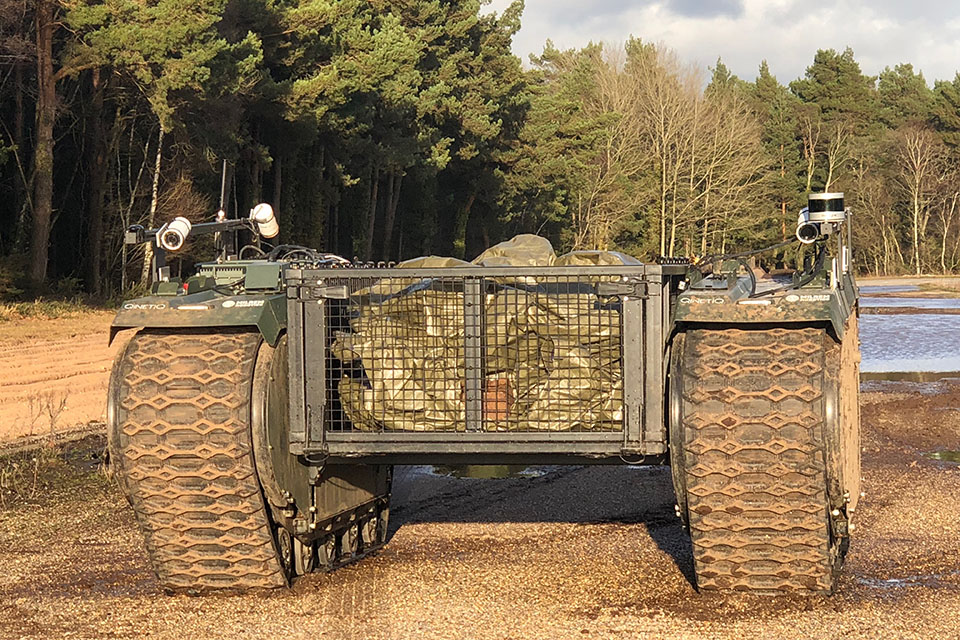
The Ministry of Defence (MoD) has announced what it calls the biggest military robotics exercise in British history. The Autonomous Warrior exercise will see British troops testing more than 70 examples of autonomous technology that could assist them in combat, including prototype drones and autonomous ground vehicles.
Today the Army have started the biggest military robot exercise in British history. Exercise Autonomous Warrior will test over 70 prototype unmanned aerial and autonomous ground vehicles. Read all about it here: https://t.co/B81b2lGKWg #AWE18 #autonomouswarrior18 pic.twitter.com/42W9vWX1qQ
— Ministry of Defence ?? (@DefenceHQ) November 12, 2018
MoD autonomous trial, which takes place Salisbury Plain and lasts four weeks, will test technologies used in surveillance, long-range and precision targeting, enhanced mobility and resupplying forces, urban warfare, and enhanced situational awareness.
Defence Secretary Gavin Williamson: “Our troops now have the chance to test out a huge range of robotic kit in what will be the biggest exercise of its kind in our history.
“We’re always working with the brightest minds in Britain and across the world to see how they can support our military of the future, but now the frontrunners have the chance to prove what they can really do on a battlefield.
Read this: Airbus in “Unprecedented” Drone Swarm Demonstration
“This equipment could revolutionise our Armed Forces, keeping them safe and giving them the edge on an increasingly unstable world.”
An MoD spokesperson told Computer Business Review that it is currently working on the range of tech it is testing, but the trial will include ground vehicles developed by Horiba Mira and Qinetiq, and UAVs from Animal Dynamics, Fleetonomy, and Bernard Microsystems.
“As with all these trials, each piece of equipment will be subject to much more testing and scrutiny before we would begin the procurement and eventual deployment of the systems,” the spokesperson said.
Read more: MoD turns to big data analytics platform for a machine learning approach to threat defence
One of the key areas of the trial is to test the autonomous last mile supply — in other words bringing food, fuel, ammunition, and other supplies to troops during their dangerous final approach to the combat zone.
The exercise will finish with a battle group experiment, where the best of the MoD autonomous technologies will be used in a simulated battle environment to test their ability to complete such tasks.

MoD has drawn the line before autonomous weapons for the trial, with government having maintained last year that it still has “no intention of developing them”.
However, the Autonomous Warrior announcement coincided with a report from Drone Wars UK that MoD is funding multiple AI weapon systems.
This allegedly includes the Taranis experimental drone designed by BAE that can “penetrate deep inside hostile territory, find a target, and facilitate either kinetic or non-kinetic influence upon it”.
MoD’s official line on the matter, as confirmed to Computer Business Review, is the following: “There is no intent within the MoD to develop weapon systems that operate entirely without human input.
“Our weapons will always be under human control as an absolute guarantee of oversight, authority and accountability.”
MoD Autonomous Vehicles in Simulated Battle Environment
The US Army, Royal Marines, the RAF, and the Defence Science and Technology Laboratory (DSTL), and industry partners and academia will also be involved, as will more than 200 multi-national, cross service personnel.
The Royal Tank Regiment Battle Group will provide the bulk of troops and take responsibility for command and control.
Autonomous Warrior follows the “Unmanned Warrior” trial conducted by the Royal Navy in 2016, which demonstrated around 50 autonomous systems diving, swimming, and flying systems for surveillance intelligence-gathering, and mine countermeasures.
Defence said Autonomous Warrior will play an integral role within the £800 million Defence Innovation Fund that supports new innovations on their way into service.






